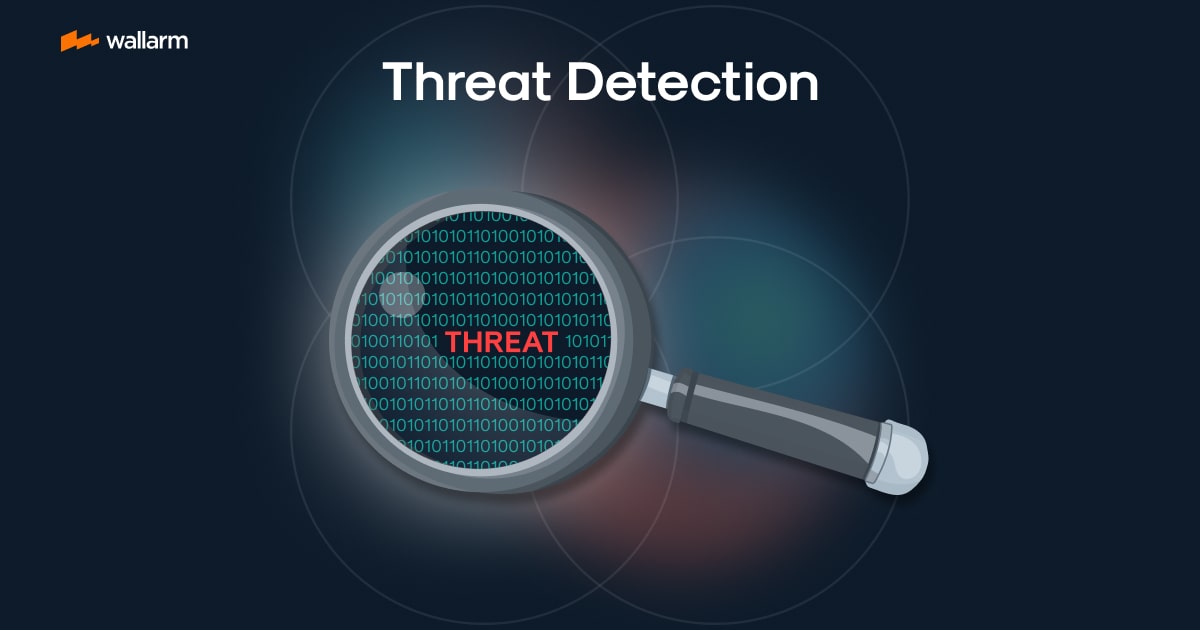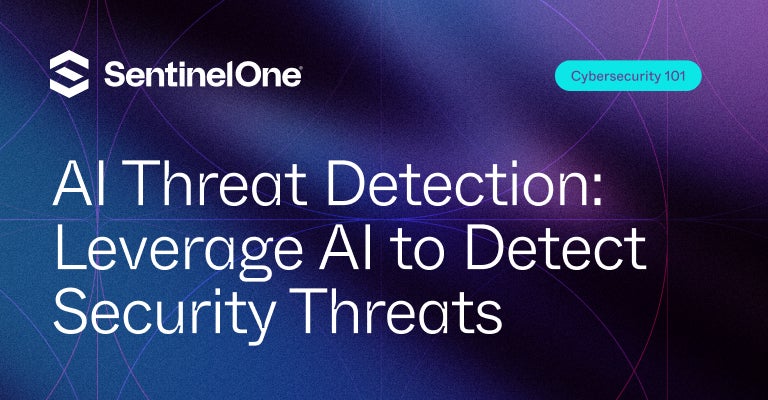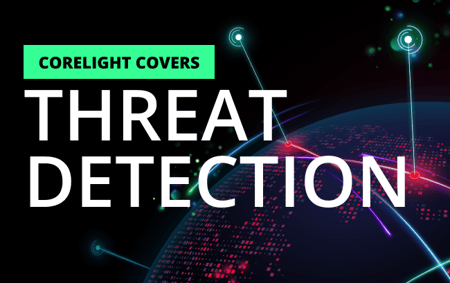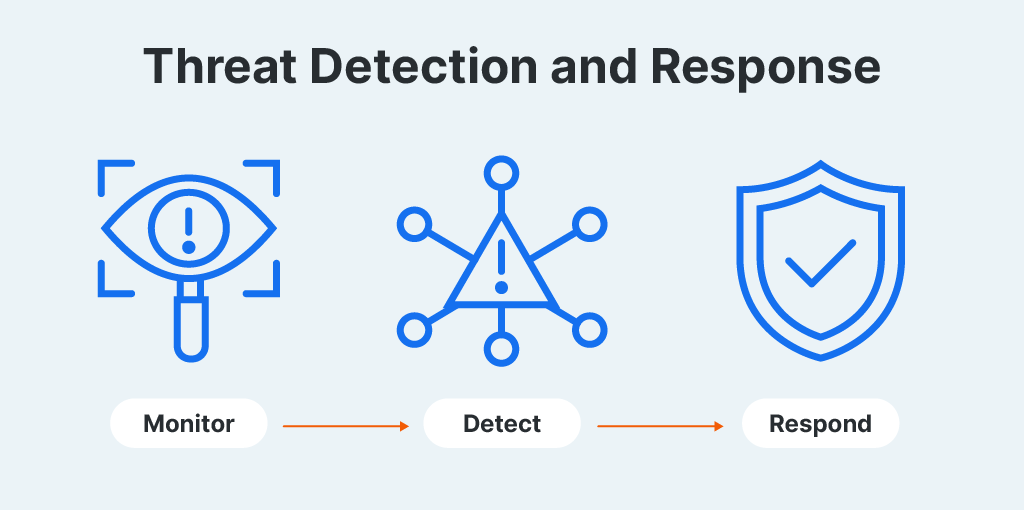Effective Threat Detection Strategies to Safeguard Your Organization. Stay safe online with effective threat detection! Learn how to spot and respond to cyber threats easily, keeping your data and devices secure.
Identify Threats Early with Monitoring Tools
Effective threat detection requires constant vigilance. Many organizations use monitoring tools to detect unusual activities. These tools track network traffic and user behavior. They alert teams before threats escalate.
Benefits of Monitoring Tools
- Early detection of suspicious activities.
- Automated alerts save time.
- Helps to analyze patterns over time.
Popular Monitoring Tools
| Tool Name | Primary Function |
|---|---|
| Splunk | Log analysis and monitoring |
| Wireshark | Network traffic analysis |
| Nagios | Infrastructure monitoring |
Implement User Behavior Analytics (UBA)
User Behavior Analytics helps in spotting anomalies in user activities. By learning what normal behavior looks like, UBA can flag anything suspicious. If an employee accesses sensitive data unexpectedly, UBA can produce alerts.
Importance of Anomaly Detection
- Combats insider threats effectively.
- Reduces false positives in alerts.
- Enhances overall security posture.
How UBA Works
| Step | Description |
|---|---|
| Data Collection | Gather user activity data. |
| Behavior Analysis | Identify usual patterns of behavior. |
| Alert Generation | Notify relevant teams about anomalies. |
Ensure Strong Access Control Mechanisms
Access control ensures that only authorized users can access sensitive information. Role-based access control (RBAC) limits user access based on their job functions. This minimizes exposure to unauthorized users.
Types of Access Control
- Mandatory access control (MAC)
- Discretionary access control (DAC)
- Role-based access control (RBAC)
Best Practices for Access Control
| Practice | Description |
|---|---|
| Regular Review | Check access rights periodically. |
| Least Privilege | Limit access to necessary resources. |
| Secure Passwords | Enforce strong password policies. |
Utilize Intrusion Detection Systems (IDS)
Intrusion Detection Systems monitor network traffic for suspicious activities. An IDS can be network-based or host-based. It analyzes data packets and detects unusual patterns or unauthorized access attempts.
Advantages of IDS
- Helps in real-time threat detection.
- Provides detailed logs for analysis.
- Facilitates compliance with security standards.
IDS Types and Their Features
| Type | Feature |
|---|---|
| Network IDS | Monitors entire network traffic. |
| Host IDS | Monitors activity on individual devices. |
| Signature-based IDS | Detects known threats using signatures. |
Conduct Regular Security Audits
Regular security audits provide insights into existing vulnerabilities. They identify areas of improvement in security policies and practices. An audit can examine physical, administrative, and technical controls.
Benefits of Security Audits
- Spot vulnerabilities before they can be exploited.
- Enhance security policies.
- Comply with legal and regulatory standards.
Audit Checklist Overview
| Audit Area | Focus Points |
|---|---|
| Network Security | Firewall settings, IDS, encryption. |
| User Access | Access controls, account management. |
| Data Protection | Data handling, incident response plans. |
Enhance Threat Intelligence Sharing
Threat intelligence sharing enhances an organization’s security posture. It involves exchanging data with trusted partners. This data can include insights about new threats and mitigation strategies.
Advantages of Threat Intelligence Sharing
- Staying ahead of emerging threats.
- Reducing response time to incidents.
- Building a collective defense against attackers.
Platforms for Sharing Intelligence
| Platform Name | Description |
|---|---|
| ISACs | Sector-specific information sharing centers. |
| MISP | Open-source threat intelligence platform. |
| STIX/TAXII | Frameworks for sharing threat intelligence. |
Implement Incident Response Plans
Incident response plans are vital for managing security incidents. These plans outline roles, processes, and tools needed during a response. They ensure a swift and effective response to minimize damage.
Components of an Incident Response Plan
- Preparation and planning.
- Identification of incidents.
- Containment, eradication, and recovery.
Steps to Develop an Incident Response Plan
| Step | Description |
|---|---|
| Define Roles | Assign specific responsibilities to team members. |
| Establish Procedures | Create clear procedures for each incident type. |
| Regular Testing | Conduct drills to ensure preparedness. |
Utilize Advanced Threat Detection Technologies
Advanced threat detection technologies include machine learning and AI. These technologies analyze vast amounts of data to identify threats. They learn from past incidents to improve detection accuracy.
Examples of Advanced Technologies
- Behavioral analytics tools.
- Endpoint detection and response (EDR).
- Threat hunting platforms.
Benefits of AI in Threat Detection
| Benefit | Description |
|---|---|
| High Speed | Processes data much faster than humans. |
| Accuracy | Reduces false positives significantly. |
| Scalability | Easily scales with growing data. |
Invest in Employee Training Programs
Employee training enhances awareness of potential threats. Training helps staff recognize phishing attacks and other techniques used by attackers. Regular workshops can keep security top-of-mind for employees.
Components of Effective Training
- Phishing simulation exercises.
- Secure practice guidelines.
- Incident reporting procedures.
Training Program Evaluation
| Evaluation Method | Description |
|---|---|
| Quizzes | Assess knowledge retention. |
| Feedback Surveys | Gather participant feedback for improvements. |
| Incident Reports | Review incidents to measure effectiveness. |
Ensure Data Encryption Protocols
Data encryption is essential for protecting sensitive information. Encryption secures data both in transit and at rest. This adds an extra layer of security against unauthorized access.
Encryption Methods to Consider
- Transport Layer Security (TLS).
- Advanced Encryption Standard (AES).
- End-to-end encryption methods.
Best Practices for Data Encryption
| Practice | Description |
|---|---|
| Key Management | Ensure proper management of encryption keys. |
| Regular Updates | Update encryption algorithms to stay secure. |
| Policy Enforcement | Implement strong encryption policies. |
Quote on Effective Threat Detection
“To remain secure, organizations must embrace proactive strategies in threat detection.” – Elwyn Feil
Regularly Update Software and Systems
Keeping software up to date is vital. Vulnerabilities in software are common entry points for attackers. Regular updates help to close potential security gaps.
Update Schedule Recommendations
- Monthly updates for critical applications.
- Quarterly reviews for system software.
- Immediate updates for urgent security patches.
Software Update Management Tools
| Tool Name | Function |
|---|---|
| WSUS | Microsoft Windows Update Service. |
| ManageEngine | Automated patch management. |
| Ivanti | Endpoint management solutions. |

Industry Impact on Threat Detection
Organizations face serious threats every day. The impact of these threats often extends beyond financial losses. Trust issues arise, and brand reputation suffers. Large industries like finance, healthcare, and technology require additional focus on Effective Threat Detection Strategies to Safeguard Your Organization.
In finance, breaches can lead to immediate losses. A single data compromise may result in hefty fines and loss of clients. Accuracy is critical. Clients expect their financial data to be safe. Thus, investing in detection systems becomes essential.
Healthcare is another critical sector. Patient data is sensitive. A breach not only endangers personal data but can also affect health outcomes. Hospitals and clinics must comply with strict regulations. Failure to protect patient data can result in substantial penalties.
In technology, data and intellectual property are vital. Cybercriminals often target tech firms to steal innovative ideas. Thus, maintaining effective detection strategies is crucial. Companies must prevent breaches and protect their developments.
Adapting to Threats in Different Sectors
Various sectors face unique threats. Adaptation is key. Finance uses algorithms to detect unusual transactions. Healthcare employs machine learning to analyze patient data access. Technology firms often rely on advanced firewalls and intrusion detection systems.
Technological Innovations in Threat Detection
Technological advancements enhance detection efforts. Organizations use various tools to improve security. These technologies help to spot threats early, reducing potential damage.
Artificial intelligence plays a significant role. It can analyze large volumes of data quickly. AI finds patterns that a human might miss. By using AI, companies can detect anomalies in real-time.
Additionally, machine learning allows systems to improve over time. These systems learn from previous attacks. With this knowledge, they become better at recognizing future threats. Companies can rely on these findings to enhance their detection processes.
Types of Detection Technologies
- Intrusion Detection Systems (IDS)
- Firewalls
- Endpoint Detection and Response (EDR)
- Network Traffic Analysis Tools
- Threat Intelligence Platforms
Integration of Cloud Technologies
Cloud computing has transformed many businesses. This technology allows scalable solutions. By using cloud-based detection tools, organizations can enhance security without significant investments. They can monitor threats across global networks.
User Experiences with Threat Detection Systems
User feedback is crucial for improving systems. Different organizations share experiences. They reveal valuable insights into what works and what does not.
Some companies experienced faster recovery times. They noticed this after implementing sophisticated detection tools. Quick detection allows prompt incident response. As a result, potential damages decrease.
Other users emphasized ease of integration. Simple setups save time. Organizations often appreciate solutions fitting into existing systems. This leads to less downtime and better performance.
Positive Impacts of Effective Systems
- Reduced breach response time
- Improved client trust
- Enhanced regulatory compliance
- Lowered operational costs over time
The Importance of Employee Training
Employee education serves as a frontline defense. Training staff on recognizing potential threats is essential. Employees often serve as the first line of defense. They can spot phishing attempts or suspicious activities.
A thorough training program equips employees with necessary skills. It can cover various topics, from identifying phishing emails to reporting suspicious behavior. Regular updates ensure that staff stay informed on current threats. They become an active part of the Effective Threat Detection Strategies to Safeguard Your Organization.
Components of a Training Program
| Training Component | Description |
|---|---|
| Phishing Awareness | Identifying fake emails and links |
| Incident Reporting | How to report potential threats |
| Password Management | Creating and maintaining strong passwords |
Implementing a Response Plan
An effective response plan is essential. Organizations must be prepared for potential breaches. Without a plan, outcomes can be chaotic.
A recognized response plan includes specific roles. Team members know what to do if a breach occurs. This clarity helps organizations respond quickly to minimize damage.
Regular drills can enhance preparedness. Simulating breaches improves the team’s ability to act. This practice can reduce confusion during actual threats.
Key Elements of a Response Plan
- Designated response team
- Defined communication protocols
- Clear escalation paths
Future Trends in Threat Detection
The future will see new challenges in threat detection. As technology advances, so do tactics by cybercriminals. Organizations must be proactive.
Increasingly, organizations will rely on automation. Automated systems will handle large amounts of data. This helps organizations stay ahead of threats. Predictive analytics will become more common, allowing early threat identification.
Organizations will focus on collaboration. Sharing threat intelligence among companies can strengthen the overall defense. By working together, organizations can anticipate and counteract common threats.
Promising Technologies on the Horizon
| Technology | Potential Impact |
|---|---|
| Blockchain Security | Increased data integrity and transparency |
| Quantum Computing | Faster data analysis and threat detection |
| Behavioral Analytics | Identifying unusual data access patterns |
Quote on the Importance of Effective Strategies
“Being proactive is key. Enhance your detection strategies!” – Fleta Glover
Compliance and Regulatory Standards
Many sectors face strict regulations. Compliance with these standards is necessary. Regulations often mandate specific security measures. Companies must ensure adherence to avoid legal consequences.
For example, GDPR seeks to protect personal data in Europe. Companies must implement clear detection strategies. Failure to comply leads to severe penalties.
Regular audits help ensure compliance. An external assessment of security measures can identify gaps. By addressing these gaps, organizations not only comply but also enhance overall security.
Key Regulatory Frameworks to Follow
- General Data Protection Regulation (GDPR)
- Health Insurance Portability and Accountability Act (HIPAA)
- Payment Card Industry Data Security Standard (PCI DSS)
Continuous Improvement of Threat Detection Tactics
Continuous improvement is vital for security strategies. Organizations must review their detection tactics regularly. Cyber threats evolve quickly, and the response must adapt as well.
Collecting data from past incidents helps refine strategies. Each breach offers insights into weaknesses. Companies can adjust tactics accordingly. By learning from every incident, organizations can enhance their overall security.
Engaging with external experts can provide fresh perspectives. Third-party assessments can identify areas for improvement. These insights can help shape future strategies.
Strategies for Continuous Improvement
| Improvement Strategy | Description |
|---|---|
| Regular Security Audits | Evaluate current security measures |
| Feedback from Employees | Incorporate staff experiences for better strategies |
| Industry Best Practices | Adopt successful practices from other organizations |

Challenges Faced in Threat Detection
The landscape of cyber threats is complex. Organizations encounter numerous challenges in detecting threats early. These issues can hinder an organization’s performance. They can even lead to severe consequences. One major challenge is the volume of data generated daily. Organizations gather immense information from various sources. Identifying a genuine threat among thousands of alerts is overwhelming.
Human error also contributes to this challenge. Analysts may overlook crucial indicators. Skilled attackers can evade conventional security measures. Many organizations use outdated technology, which can reduce effectiveness.
- Overwhelming data volume
- Human error and oversight
- Outdated security technology
- Insufficient training for staff
Another challenge involves the skills gap in the cybersecurity workforce. Many organizations struggle to find experienced professionals. This gap can lead to ineffective monitoring and response. All these factors emphasize the importance of continuous improvement in threat detection strategies. Organizations need adaptive systems to meet evolving threats.
Success Stories of Effective Threat Detection
Many organizations have found success with effective threat detection. These cases serve as shining examples. One notable case involved a financial institution. They implemented an AI-driven security system. This system analyzed transaction patterns in real time. It quickly flagged unusual activities. As a result, the organization prevented significant fraud losses.
“Effective Threat Detection Strategies to Safeguard Your Organization require constant adaptation and innovation.” – Dr. Melvin Ratke
Another success story comes from a healthcare provider. They faced ransomware attacks. After investing in advanced threat detection, they identified vulnerabilities. The healthcare provider proactively patched software. They also improved staff training. Consequently, they reduced attack incidents by 60%.
- Financial institution saw huge fraud savings.
- Healthcare provider cut ransomware attacks significantly.
- Technology integration enhanced response speed.
These success stories highlight the value of innovative tools. Organizations can boost their defenses through technology and training. Continuous testing of these systems remains vital to ensure effectiveness.
Emerging Trends in Threat Detection Strategies
Staying ahead of threats requires keeping up with trends. Emerging technologies play a key role in this area. Machine learning is becoming a standard tool in threat detection. It helps in analyzing large data sets. This can reveal patterns that indicate potential threats.
Moreover, organizations are increasingly using automation. Automated systems improve response times. They allow human analysts to focus on complex issues. This shift enhances the overall detection process.
| Trend | Description |
|---|---|
| Machine Learning | Analyzes patterns in data effectively. |
| Automation | Reduces response times and streamlines processes. |
| Threat Intelligence Sharing | Organizations pool data for informed decisions. |
Collaboration among organizations is another trend. Companies share threat intelligence. This collective effort helps all parties stay safer. By working together, organizations can better identify and manage risks.
Integrating Security Frameworks for Better Detection
Integrating various security frameworks is crucial. Many frameworks align closely with effective threat detection strategies. For instance, the NIST Cybersecurity Framework offers guidelines. Organizations can use these to create tailored detection methods.
By adopting such frameworks, organizations can identify areas needing improvement. This tailored approach helps in adapting defenses based on unique needs. Security frameworks also support compliance. They help in meeting industry standards and regulations.
- NIST Cybersecurity Framework
- ISO/IEC 27001
- SANS Critical Security Controls
A strong framework encourages regular assessments. Organizations should continuously review their processes. This ensures all detection strategies remain up to date in the face of evolving threats.
Employee Training in Threat Detection
Employees play a vital role in effective threat detection strategies to safeguard your organization. Regular training helps them recognize potential threats. Cybersecurity education is essential for staff at all levels.
Organizations should implement ongoing training programs. This can include workshops, seminars, and online courses. Topics may cover phishing scams, social engineering, and safe browsing practices. Engaging employees with real-world scenarios enhances retention.
| Training Topic | Purpose |
|---|---|
| Phishing Awareness | Helps staff recognize phishing emails. |
| Social Engineering | Educates on manipulation tactics. |
| Data Privacy | Informs on handling sensitive information. |
Interactive training methods can increase engagement. Gamification in training can make learning enjoyable. Employees become more likely to apply newfound knowledge. Training also helps create a security-aware culture in the organization.
Utilizing Advanced Technologies for Detection
Advanced technologies drive modern effective threat detection strategies to safeguard your organization. These technologies can include artificial intelligence and blockchain. AI systems can sift through large volumes of data quickly. They accelerate threat identification and response time.
Moreover, using blockchain can enhance data integrity. It provides secure transaction records. This transparency can help detect fraud or tampering. The implementation of these technologies can lead to more robust defenses.
- Artificial Intelligence for rapid analysis
- Blockchain for secure data transactions
- Behavioral Analysis for identifying anomalies
Staying informed about these technologies is vital. Regular evaluations ensure organizations use the best tools available. This adaptability can help mitigate risks effectively.
Implementing Continuous Monitoring
Continuous monitoring remains essential for threat detection. This approach involves real-time surveillance of network activities. Organizations should deploy security information and event management (SIEM) systems.
SIEM tools collect and analyze log data. They help identify suspicious patterns and behaviors. Immediate alerts can facilitate quick action. Organizations can detect potential breaches before significant damage occurs.
| Monitoring Tool | Benefit |
|---|---|
| SIEM | Centralizes log data for better analysis. |
| Intrusion Detection Systems | Detects intrusions in real time. |
| Behavioral Analytics | Identifies deviations from normal behavior. |
Regular audits can also improve monitoring efforts. Organizations must continuously adjust their strategies. This helps address any newly identified threats efficiently. Hence, effective continuous monitoring strengthens defenses.
Establishing Incident Response Plans
Having an incident response plan is vital for all organizations. These plans outline steps to take during a security breach. Organizations should create and regularly test these plans. It helps ensure quick, effective responses.
All employees must know their roles in these plans. Communication during an incident is crucial. Clear roles can minimize confusion and delays. Drills can prepare staff for real incidents, improving their response.
- Clearly defined roles and responsibilities
- Regular testing and drills
- Immediate communication protocols
Incident response plans must be adaptable. Organizations should review and update them as threats evolve. A proactive approach ensures swift recovery from incidents.

Importance of Threat Detection Strategies
Organizations face many threats. These can be cyber attacks or internal breaches. Implementing Effective Threat Detection Strategies to Safeguard Your Organization is crucial. It helps in identifying and managing these risks. Such strategies can minimize damage. They also can protect sensitive information. Therefore, organizations need strong systems in place.
Recent Developments in Threat Detection
Recent years have seen many advances in threat detection. Technologies like AI and machine learning are now common. These tools allow for faster analysis of large data sets. Organizations can identify threats before they cause harm. For example, AI can spot unusual patterns in network traffic. This hints at possible attacks. Moreover, platforms like SIEM (Security Information and Event Management) collect and analyze logs. They provide a comprehensive view of threats.
Key Technologies
- Artificial Intelligence (AI)
- Machine Learning (ML)
- Security Information and Event Management (SIEM)
- Intrusion Detection Systems (IDS)
Impact of Cloud Security
Cloud security has drastically changed operations. Many companies are now shifting to cloud solutions. These solutions have their own risks. Compliance and data-sharing pose concerns. Organizations need effective monitoring in place. Many cloud services now offer built-in security features. Using these features is advisable.
Case Studies of Effective Threat Detection
Several organizations have successfully implemented threat detection strategies. These case studies show how the right approach can lead to positive results.
Company A: Financial Sector
Company A faced frequent cyber threats. They adopted a strong SIEM solution. After implementation, they detected multiple attempts at data breaches. Thanks to their rapid response, no data was compromised. This case shows the effectiveness of real-time monitoring.
Company B: Healthcare Industry
Company B, a healthcare provider, had to protect patient data. They incorporated AI-driven analytics to track unusual behavior. After a series of successful implementations, they achieved better threat detection. Ransomware attacks decreased by 70% within a year, proving their strategy effective.
| Company | Sector | Outcome |
|---|---|---|
| Company A | Financial | No data compromises |
| Company B | Healthcare | 70% decrease in attacks |
Expert Opinions on Threat Detection
Experts in cybersecurity emphasize the need for effective strategies. They suggest continuous training and awareness programs. Employees must recognize potential threats. Some experts also advocate for periodic assessments. Assessing systems helps in identifying vulnerabilities.
Quote by Cale Kreiger
“Investing in effective threat detection can save organizations from severe losses.” – Cale Kreiger
Regular Training Programs
- Phishing awareness
- Incident response training
- Data protection protocols
Integrating Security Measures
To ensure Effective Threat Detection Strategies to Safeguard Your Organization, integration is vital. Organizations should unify different security systems. This facilitates better communication across departments. For example, integrating firewalls with IDS enhances monitoring. A well-integrated system can break down silos. This way, threats can be identified more efficiently.
Challenges in Threat Detection
Organizations face many challenges. Rapid technological changes lead to new threats. Likewise, human errors often increase risks. Threat actors are becoming more sophisticated. Organizations need to stay updated on these trends. Detecting new types of attacks requires constant learning.
Emerging Threats
- Ransomware as a Service (RaaS)
- Supply chain attacks
- Insider threats
Human Factors
Human behavior often leads to breaches. Employees may accidentally click malicious links. Regular training can help reduce such risks. Organizations should encourage a culture of security. This includes reporting suspicious activities quickly.
Future of Threat Detection
As technology advances, threat detection will also evolve. AI will play a more significant role. It will improve response times. Real-time analytics will be crucial. More organizations will adopt predictive models. Predictive analysis will help foresee potential threats before they occur.
Collaboration with External Experts
- Partnering with cybersecurity firms
- Regular security audits
- Information sharing among firms
Importance of Effective Threat Detection Strategies
Effective Threat Detection Strategies to Safeguard Your Organization are critical. They protect sensitive data and maintain operational integrity. A major incident can have severe consequences. These strategies help detect issues early. Early detection ensures quick response. This reduces damage and costs. Awareness of threats is vital for security.
Types of Threats Organizations Face
Organizations encounter various threats. Each has unique signatures and behaviors. Understanding these threats helps in detection. Here are some common types:
- Malware – Malicious software that damages systems.
- Phishing – A method to trick users into giving up data.
- Ransomware – Attacks that lock data until a ransom is paid.
- Insider Threats – Threats from employees or trusted users.
- Denial of Service – Attacks that disrupt services.
Elements of Effective Threat Detection
Key elements contribute to Effective Threat Detection Strategies to Safeguard Your Organization. Here’s a comprehensive list:
- Continuous Monitoring – Regularly check systems and networks.
- Behavioral Analysis – Observe user activity and patterns.
- Threat Intelligence – Gather data on new threats.
- Incident Response Plan – Prepare for potential attacks.
- Employee Training – Educate staff on security measures.
Practical Applications of Threat Detection
Effective Threat Detection Strategies to Safeguard Your Organization include several practical applications:
| Application Type | Description |
|---|---|
| Network Security | Analyzes traffic patterns for anomalies. |
| Endpoint Protection | Secures devices with antivirus and alerts. |
| Data Loss Prevention | Monitors and controls sensitive data. |
| SIEM Solutions | Aggregates logs for real-time threat detection. |
Challenges in Threat Detection
Implementing Effective Threat Detection Strategies to Safeguard Your Organization faces challenges. Recognizing these obstacles helps improve systems:
- False Positives – Excessive alerts complicate responses.
- Resource Constraints – Limited budget affects technology.
- Lack of Skills – Shortage of qualified personnel.
- Integration Issues – Disparate systems hinder collaboration.
Advanced Analytics in Threat Detection
Advanced analytics provide improved detection. Techniques such as machine learning and AI enhance capabilities. Here’s how they work:
- Pattern Recognition – Identifies unusual behaviors automatically.
- Anomaly Detection – Flags deviations from normal operations.
- Predictive Analytics – Anticipates future attacks based on data.
The Role of Automation
Automation plays a significant role in Effective Threat Detection Strategies to Safeguard Your Organization. Automation reduces manual tasks. This leads to faster reaction times. Consider these aspects:
- Automated Alerts – Immediate notifications for suspicious activities.
- Response Automation – Predefined actions programmed for incidents.
- Reporting Tools – Generates reports without manual input.
Integrating Threat Detection with Existing Systems
Seamless integration enhances Effective Threat Detection Strategies to Safeguard Your Organization. Here’s the integration approach:
| Integration Type | Benefit |
|---|---|
| Cloud Integration | Centralizes data from cloud services. |
| API Usage | Links various security tools and systems. |
| Cross-Platform Tools | Ensures compatibility across devices. |
Employee Awareness and Training
Training is vital for a strong security culture. Employees play a key role in Effective Threat Detection Strategies to Safeguard Your Organization. Proper training helps in recognizing threats. Here are training focuses:
- Phishing Awareness – Identifying fake emails.
- Safe Browsing Practices – Protecting against malicious sites.
- Incident Reporting – How to report suspicious activities.
The Future of Threat Detection
The future of Effective Threat Detection Strategies to Safeguard Your Organization looks promising. Technology evolves constantly. Organizations can benefit from several advancements:
- AI Improvements – Enhanced machine learning algorithms.
- Behavioral Biometrics – Identifying users based on behavior.
- Decentralized Security – Distributing security measures across networks.
Compliance and Regulatory Requirements
Compliance is vital for Effective Threat Detection Strategies to Safeguard Your Organization. Regulations guide how data should be protected. Here are critical regulations:
| Regulation | Description |
|---|---|
| GDPR | Regulates data protection in Europe. |
| HIPAA | Protects medical data in the U.S. |
| PCI-DSS | Secures credit card information. |
Partnerships with Security Firms
Collaborating with security firms enhances Effective Threat Detection Strategies to Safeguard Your Organization. Here’s how partnerships help:
- Access to Expertise – Utilizes specialized knowledge.
- Threat Intelligence Sharing – Gains insights from other organizations.
- Comprehensive Security Solutions – Combines resources for better security.
Continuous Improvement Strategies
Organizations must commit to continuous improvement. Regular assessments help maintain Effective Threat Detection Strategies to Safeguard Your Organization. Here are some strategies:
- Regular Audits – Ensures compliance and effectiveness.
- Feedback Loops – Incorporates insights from incidents.
- Up-to-date Technology – Invest in new security tools.
Measuring the Effectiveness of Threat Detection
Measuring success is crucial. Metrics help gauge Effective Threat Detection Strategies to Safeguard Your Organization. Consider the following metrics:
| Metric | Description |
|---|---|
| Response Time | Time taken to respond to threats. |
| False Positive Rate | Percentage of incorrect alerts. |
| Incident Recovery Time | Time to restore normal operations. |
Budgeting for Threat Detection
Budgeting affects Effective Threat Detection Strategies to Safeguard Your Organization. Proper allocation ensures adequate resources. Here are budget considerations:
- Tool Acquisition – Investing in necessary software and hardware.
- Staff Training – Allocating funds for employee education.
- Incident Response Funds – Setting aside money for emergency responses.
Quote on Threat Detection
“Implementing proactive measures is key to ensuring an organization’s safety.” – Jana Renner
Building a Security Culture
A security culture strengthens Effective Threat Detection Strategies to Safeguard Your Organization. Encouraging security practices among all employees is essential. Key elements include:
- Open Communication – Discuss security openly among teams.
- Regular Training Sessions – Keep security knowledge current.
- Leadership Involvement – Leaders should prioritize security.
Tools for Effective Threat Detection
Utilizing the right tools is crucial. Here are popular tools for Effective Threat Detection Strategies to Safeguard Your Organization:
| Tool Name | Function |
|---|---|
| Splunk | Log management and analysis. |
| McAfee | Endpoint protection suite. |
| FireEye | Threat detection and response. |

What are the key components of an effective threat detection strategy?
An effective threat detection strategy typically includes continuous monitoring, incident response plans, real-time threat intelligence, employee training, and regular system updates. These components work together to identify and mitigate potential threats before they can cause significant harm.
How can organizations implement continuous monitoring?
Organizations can implement continuous monitoring by utilizing security information and event management (SIEM) systems, intrusion detection systems (IDS), and automated alerts. These tools help in tracking network activity and identifying abnormal behavior in real-time.
What role does employee training play in threat detection?
Employee training is crucial as it equips staff with the knowledge to recognize potential threats, such as phishing attempts or suspicious activities. Regular training sessions ensure that employees remain vigilant and informed about the latest security threats.
Why is real-time threat intelligence important?
Real-time threat intelligence provides organizations with up-to-date information on emerging threats and vulnerabilities. This information allows teams to proactively respond to potential attacks and better protect their assets.
How often should organizations update their security systems?
Organizations should update their security systems regularly, typically at least once a month or as soon as new patches or updates are released. This practice helps to close vulnerabilities that could be exploited by cybercriminals.
What should be included in an incident response plan?
An incident response plan should include identification, containment, eradication, recovery, and lessons learned. Each phase is essential for effectively managing and mitigating the impact of a security incident.
How do automated systems aid in threat detection?
Automated systems scan for vulnerabilities, monitor network traffic, and alert security teams about potential threats. These systems reduce the response time to incidents and allow for quicker containment measures.
What is the importance of vulnerability assessments?
Vulnerability assessments help identify weaknesses in an organization’s security posture. Regular assessments enable organizations to address these weaknesses proactively, reducing the risk of successful attacks.
Can threat detection strategies be customized for different organizations?
Yes, threat detection strategies can be adapted based on the specific needs and risks associated with different organizations. Factors such as the industry, size, and technological environment will influence the strategy implementation.
What are the benefits of utilizing machine learning in threat detection?
Machine learning can enhance threat detection by analyzing large volumes of data to identify patterns and anomalies. This technology allows for more accurate detection of threats in real-time and can adapt to new types of attacks.

Conclusion
To keep your organization safe, it’s essential to focus on effective threat detection strategies. Start by keeping software updated and using reliable security tools. Train your team to recognize suspicious activities and encourage open communication about potential threats. Regularly review and improve your security measures to stay a step ahead of risks. By staying proactive and ready to adapt, you can create a secure environment for your business. Remember, protecting your organization is an ongoing effort that requires everyone’s participation. Simple steps can go a long way in ensuring safety and security for all.
